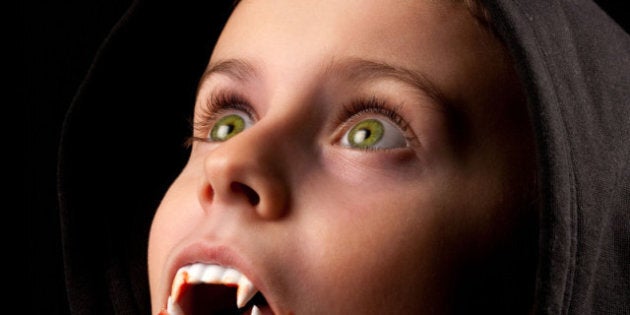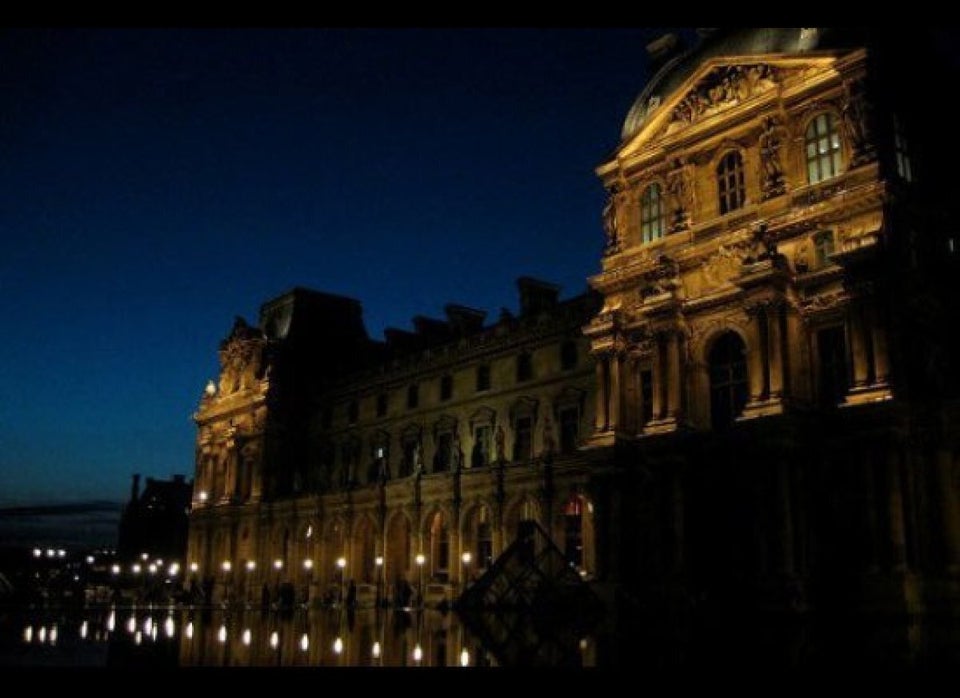
Most people go to Greece for beaches, ouzo and temples gleaming in the Mediterranean sun. I went for a vampire. But what I found there led me beyond pop culture images of vampires to a darker part of the human imagination.
In the midst of searching for ancient ruins, an archaeological team from UBC stumbled on a cemetery from the time of the Ottoman empire. The lead researcher wanted an osteologist to study the skeletons -- especially one that might have been accused, all those long years ago, of being a vampire.
There wasn't much question of not going, of course. I was a graduate student in osteology -- studying human bones for what they can tell us about life in the past and today. Greece sounded exciting, and studying the cemetery would give me the chance to do the kind of research I wanted to spend my life on. A 'vampire' to work on was an intriguing bonus.
When I got to Mytilene, Greece and took a look at our 'vampire,' I saw what seemed to have been a normal man in every way. What was unusual was the way he'd been buried. In a graveyard full of corpses neatly aligned and placed in the earth in simple shrouds, this man had been put into a coffin, then into a pit dug into the stony core of an old wall. Three large metal spikes crossed his body at the neck, pelvis and ankles.
Someone, it seemed, didn't want him to leave.
Vampires go back a long way deep into European folklore: further than Edward Cullen, black-and-white Bela Lugosi movies and 19th century vampire thrillers like Dracula. When this man was buried in this wall, belief in vampires stretched from Eastern Europe, where the stories that inspired Dracula came from, down through the Balkans to Greece.
These folkloric vampires weren't much like the modern version. They were corpses animated by demons, and although some could pass as human, many were ghastly things with swollen bodies and discoloured skin -- looking more like zombies than movie vampires. They rarely bit anyone, and bite victims never turned into vampires; they would simply waste away and die, as would someone who met a vampire on the road or answered its knock at the door. Some vampires didn't kill at all but acted more like pesky poltergeists, banging on walls, breaking crockery and harassing livestock. A few simply seemed to want to hang around the people and places they once knew.
Corpses could become vampires in many ways. A sinful life could do it, as could events beyond a person's control like a mistake in their funeral rites. When nightmares, unexplained sickness or other bad luck made a community suspect that a recently deceased person had become a vampire, the body had to be treated to chase the demon out, or at least ensure the corpse stayed put. This could be done with the classic wooden or metal stake through the heart (Stoker got this right), head, navel or pelvis. A sharp blade might be laid across the neck, or the head might be cut off completely. Objects -- ranging from tiny seeds to the corpse's own head -- could be put between the ankles. The corpse could be "kept down" by binding its hands or covering the grave with a large rock. If all else failed, it might be torn apart or burned.
So, was this really a vampire? We think so. Burial in the wall echoes the idea of keeping the corpse down, and the stakes were found in places that got a lot of attention when suspect corpses were dealt with. Over the years, Greek archaeologists have found other suspected vampire burials -- including one on the same island, with stakes in the same positions- - and I suspect more will follow.
We'll probably never know why this man was singled out. There's nothing unusual apparent about him, and this was true of a lot of corpses suspected of becoming 'vampires.' People facing fears and worries -- sickness, bad luck, dreams of the departed -- would blame a recent corpse. If they dug it up, chances are they'd find a decaying corpse that looked a lot like what they expected a vampire to look like. Case closed, and fears, at least for a while, averted.
On the surface, there's not much in common between Twilight and the older vampires of folklore. But sometimes, at this time of the year, I wonder. In the end, the people who buried the Mytilene 'vampire' were nervous about death and the unknown.
Today, on Halloween, we may laugh at the darkness. But maybe that's just our own way of dealing with the same fear...
Sign up for Peacock to stream NBCU shows.
to stream NBCU shows.
